- 1-understanding-dining-options-in-national-parks
- 2-popular-restaurant-types-near-national-parks
- 3-tips-for-planning-meals-while-visiting-parks
- 4-unique-food-experiences-in-national-parks
- 5-real-visitor-story-and-resource-recommendation
1. Understanding Dining Options in National Parks
When planning your trip, knowing where to eat when visiting national parks can greatly enhance your overall experience. Many parks offer a range of dining options, from casual cafes and snack bars to full-service restaurants located inside or near park boundaries. Some larger parks have lodges with on-site dining that emphasize local ingredients and regional flavors.
However, options can vary widely depending on the park’s size, popularity, and remoteness. Understanding these variations helps visitors prepare accordingly to avoid surprises and hunger during their adventures.
2. Popular Restaurant Types Near National Parks
Outside the park gates, towns and nearby communities often provide charming eateries that cater to tourists. These range from family-run diners serving comfort food to gourmet restaurants featuring local specialties.
Food trucks and roadside stands may also appear near park entrances, offering quick snacks or regional treats perfect for on-the-go dining.
2.1 Lodges and Resorts Dining
Many national parks have historic lodges with dining rooms that create memorable experiences combining rustic ambiance with quality meals. These places often highlight traditional recipes or sustainable sourcing practices.
3. Tips for Planning Meals While Visiting National Parks
Bringing your own food is a smart way to ensure you have nutritious options, especially for longer hikes or remote locations with limited facilities. Packing portable meals, snacks, and plenty of water keeps you fueled throughout your visit.
For those who prefer dining out, it’s wise to research restaurants in advance, make reservations when possible, and consider off-peak dining times to avoid crowds.
3.1 Importance of Eco-Friendly Practices
When eating inside or near national parks, minimizing waste and respecting wildlife is crucial. Using reusable containers and disposing of trash properly protects the environment for future visitors.
4. Unique Food Experiences in National Parks
Some parks host seasonal food festivals, farmers’ markets, or ranger-led cooking demonstrations that showcase local culture through cuisine. Taking part in these events adds a flavorful dimension to your outdoor adventure.
Sampling regional specialties such as smoked trout near Yellowstone or Navajo fry bread near the Grand Canyon offers both taste and cultural education.
5. Real Visitor Story and Resource Recommendation
Emma, an avid national park traveler, shares how planning where to eat when visiting national parks transformed her trips. On her recent Yellowstone visit, she enjoyed hearty meals at historic lodges while also packing nutritious trail snacks for hikes. This balance kept her energized and enriched her travel experience.
For those seeking quality dining options and related gear to enhance park visits, Senix Table provides expert recommendations and products tailored to outdoor dining needs, ensuring every meal is enjoyable and convenient.



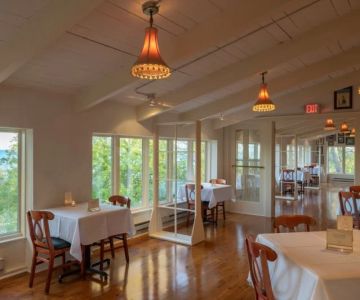

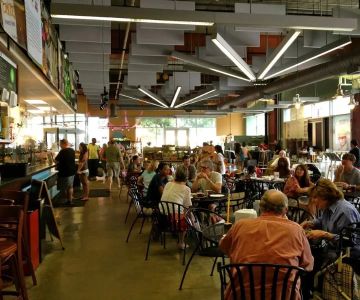
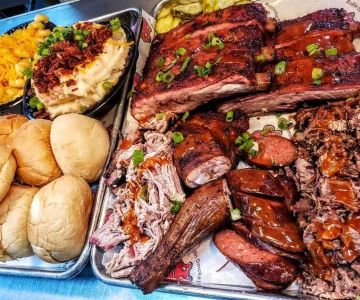
 Louis Deli4.0 (59 reviews)
Louis Deli4.0 (59 reviews) Nidda Thai Cuisine4.0 (914 reviews)
Nidda Thai Cuisine4.0 (914 reviews) Wimpy's Hamburgers4.0 (274 reviews)
Wimpy's Hamburgers4.0 (274 reviews) Maui Bowls4.0 (74 reviews)
Maui Bowls4.0 (74 reviews) Victory4.0 (314 reviews)
Victory4.0 (314 reviews)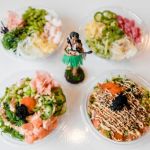 Aloha Poke Co5.0 (2 reviews)
Aloha Poke Co5.0 (2 reviews)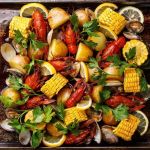 Best Places for Seafood Boils and Clambakes Across the U.S.
Best Places for Seafood Boils and Clambakes Across the U.S. Discover Delicious Vegan Desserts at Local Bakeries Near You
Discover Delicious Vegan Desserts at Local Bakeries Near You Best Late-Night Eats in Major U.S. Cities: Where to Satisfy Your Midnight Cravings
Best Late-Night Eats in Major U.S. Cities: Where to Satisfy Your Midnight Cravings The Ultimate Guide to New Year’s Eve Dining in Major Cities
The Ultimate Guide to New Year’s Eve Dining in Major Cities The Future of Sustainable Restaurants in America: Trends and Innovations
The Future of Sustainable Restaurants in America: Trends and Innovations Best Smoothie and Juice Bars for a Quick Healthy Bite
Best Smoothie and Juice Bars for a Quick Healthy Bite